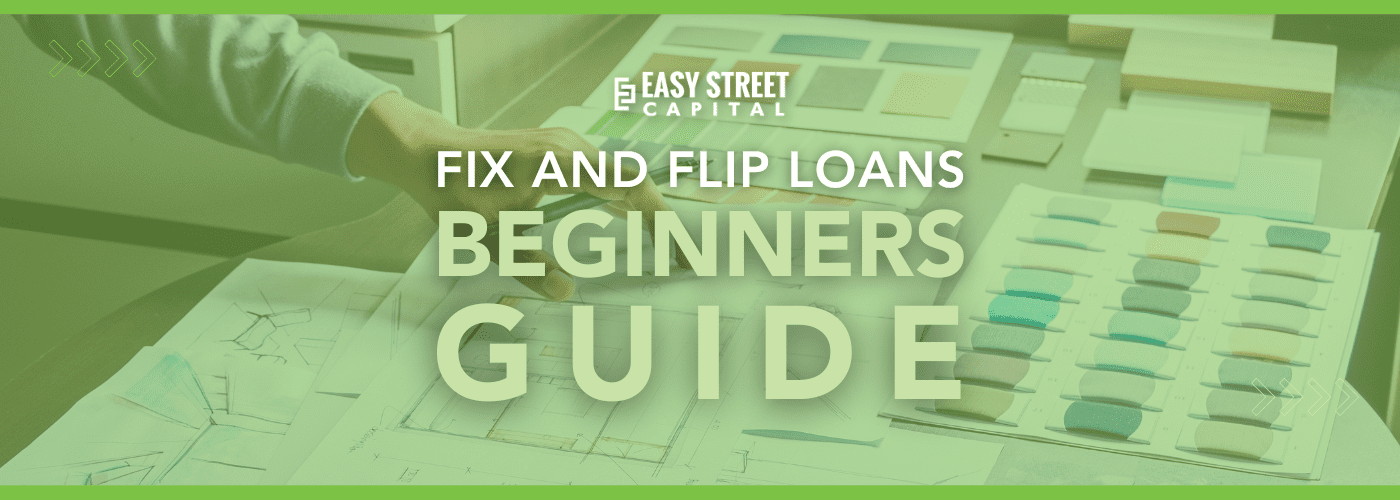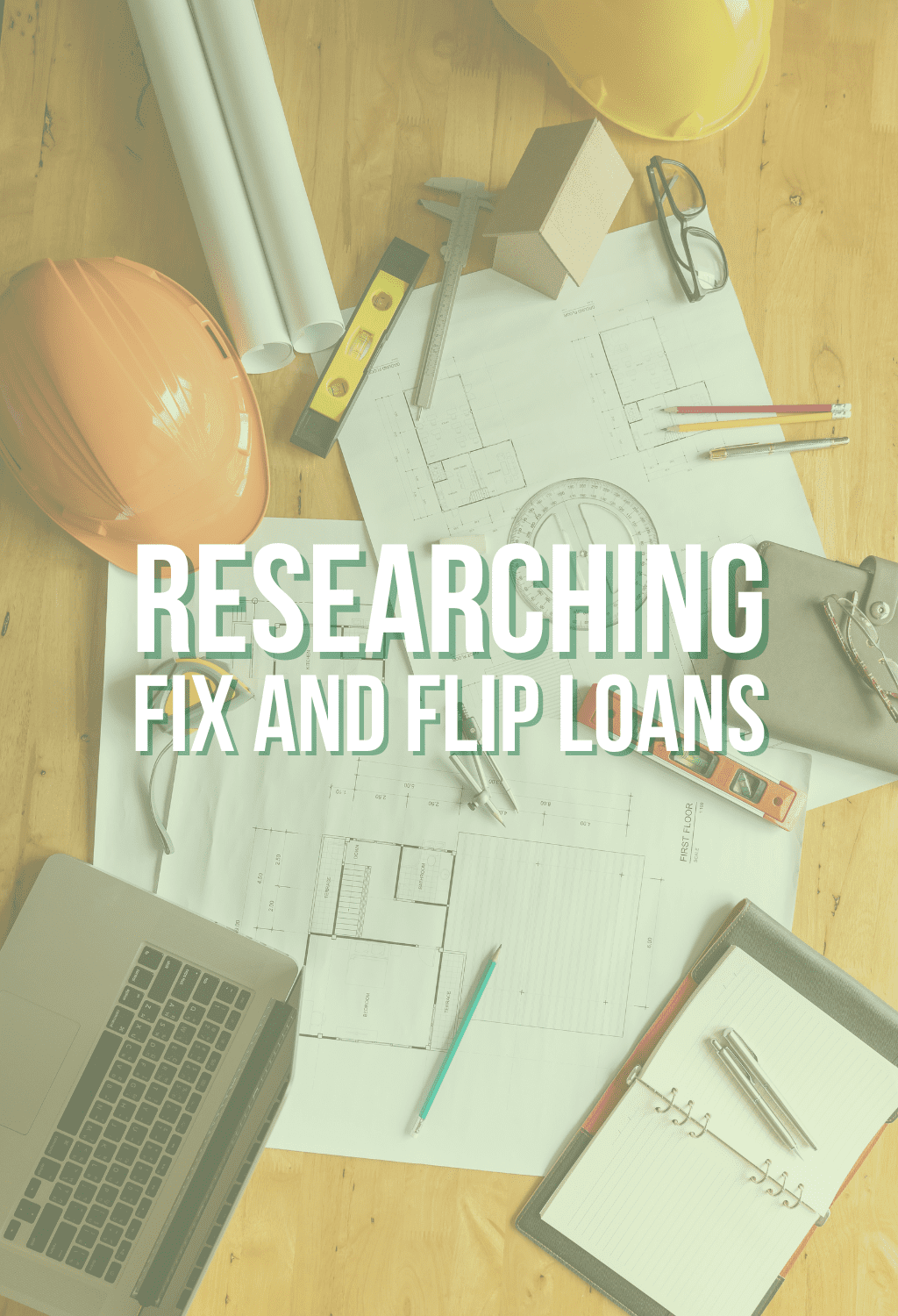Fix and Flip Loans for Beginners
EASY STREET CAPITAL'S FIX AND FLIP LOANS GUIDE

For beginner real estate investors, one of the best avenues for starting in real estate investing is through flipping houses. Investors find a distressed property and purchase the property at a discounted price. Then they invest in the rehab and profit from the new market value. Shows such as Fixer Upper and Flip or Flop have boosted the popularity of house flipping. This has flooded the market with new investors looking to capitalize on high returns.
In this article, we’ll take a look at fix and flip loans, planning a budget, finding a team, and profiting on your investment property!

Researching Fix and Flip Loans
Starting your journey with house flipping requires research and knowledge. It’s important to have a good grasp on project costs, likely resell value and the overall time it will take to finish a fix and flip project. Here are three tips on how to get started.
1. Know the Market
It’s important to understand market trends and areas that offer the best opportunity for a high return on investment. Having a good understanding of the local real estate market goes a long way in choosing the right property to invest in. Check out our list of best cities to flip houses in 2025! Network with local real estate agents or other investors who can provide helpful insights into certain areas that offer the best potential.
2. Set a Budget
Every investor is different and setting a budget should make sense for each individual investor. Depending on the amount of rehab needed, making sure the numbers are precise is critical when looking at a potential project. Nothing eats away at profits more than inaccurately projecting the budget. It’s a good rule of thumb to over budget just in case any unforeseen circumstances arise throughout the project.
3. Hire a Contractor
Unless an investor plans to do all the renovations, they’ll need to hire a contractor. A professional contractor will have a team that can efficiently renovate the property and help the investor have it ready to put on market quickly. As with everything else in the research phase, it’s important for investors to do their due diligence. Many investors get burned by bad contractors who request most of the payment for the project upfront and never end up finishing the work they were paid to do. Research local contractors, get references and choose someone who fits your budget with the level of quality you’re expecting.

What Are the Costs of House Flipping?
To avoid any financial pitfalls and lost profits, it’s important to know and understand the costs of flipping houses. Here’s a list of costs that every real estate investor should know.
1. Purchase Price
When looking for a fix and flip property, determining and negotiating the purchase price is important when deciding whether to purchase a property or not. A smart trick to determining the maximum price an investor should offer is the 70% Rule. The 70% rule uses the ARV of the property multiplied by 70% to get an estimated maximum purchase price. From the financing side, a hard money lender would provide up to 90% financing for the purchase price.
2. Loan to Cost
Loan to cost is how much a lender will lend on the total cost of a property(purchase price + renovations). Hard money loans provide loan to cost as high as 90% depending on the quality of the investor and the deal. This means an investor will need to provide 10% of total costs as a down payment at the closing table.
3. Loan to Value
Loan to value is how much a lender will lend on the current value of the property. For fix and flip projects, a hard money lender will typically set the maximum loan to value at 70%.
4. Down Payment
How much money does an investor need to have saved to complete the purchase of a property? Knowing the down payment is a key cost with financing a fix and flip hard money loan. Closing costs should also be factored into the costs due at the closing table.
5. Renovation Costs
The profit on fix and flip loans comes from the renovation of the property. A hard money lender will typically finance renovations as a part of the total loan amount. Additional renovation costs will be hiring a contractor to help with completing the upgrades on the property.
6. ARV
ARV or After Repair Value can be calculated to estimate the market value of a property after the renovations have been completed. The After Repair Value is calculated by adding the purchase price and the renovation value. It’s important to have a good understanding of ARV and to be sure that the property makes sense and the returns are high enough to justify investing.
Real estate investors can normally obtain a fix and flip loan from three sources. Each option offers different advantages for obtaining the financing for a fix and flip loan and it is ultimately up to the investors on which option makes the most sense for their fix and flip project.
Fix and Flip Financing
1. Hard Money Loans
A hard money loan for fix and flip financing can be obtained from a hard money lender. Hard money lenders specialize in funding fix and flip loans and generally require less documentation than a traditional mortgage. Interest rates on a hard money loan is typically higher than conventional loans, but the speed and reliability of hard money loans is often worth the higher interest only payments.
Hard money lenders can also provide bridge loans. A bridge loan allows investors to renovate a property and refinance the loan into a long-term rental property with lower interest rates. This strategy is the BRRRR strategy.
2. Private Money Loans
Private lenders can be family or wealthy individuals looking to profit off of the risk of a fix and flip loan. These type of loans require very little underwriting and deals are usually funded more quickly at an agreed upon interest rate. However this is the least reliable fix and flip financing because the necessary capital may not always be readily available for construction costs or a property with a large loan amount.
3. Bank Loan
Finally, fix and flip loans are also funded with traditional bank financing. Bank financing on a fix and flip loan can typically offer lower interest rates, but the underwriting process is more stringent and often too slow in today’s competitive market. Compared to hard money lenders, banks ask for more documentation and are more strict on who qualifies for a loan (minimum credit score requirements, higher closing costs).
Wrapping up Fix and Flip Loans
In this article we covered a lot of what goes into completing a fix and flip project. From obtaining financing to understanding renovation costs, it’s important to understand the ins and outs of each project from start to finish. Real estate investors will need to ensure they’ve done their homework in order to successfully secure the fix and flip funding they need and budget to profit on every project.
About Easy Street Capital
Easy Street Capital is a relationship-based investment real estate lender with loan programs for every borrower. Regardless of experience or credit we are able to finance your next investment property. Whether you are buying a property to fix up, building new construction, or generating cash flow from rental units, Easy Street Capital has the solution.
As a fully discretionary lender we have the ability to customize a loan specifically to meet your individual needs. We look forward to assisting you with your next project.
Contact us today to begin your next real estate project!
